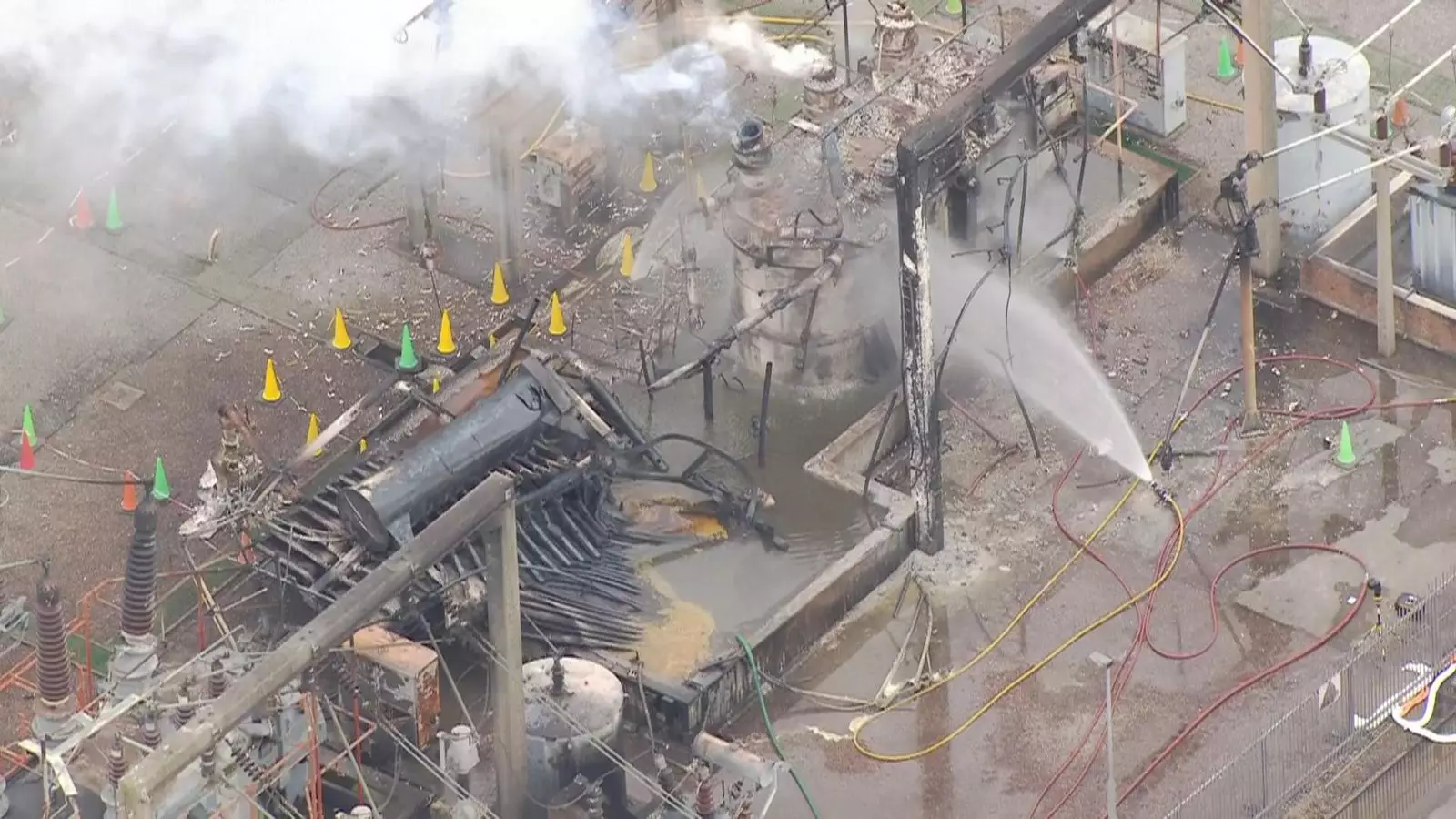In an age where efficiency in air travel is paramount, the abrupt shutting down of Heathrow Airport, Europe’s busiest air hub, is a stark reminder of the fragility that lies just beneath the surface of modern infrastructure. On Friday, the airport experienced extensive disruptions affecting around 1,300 flights after a fire incapacitated a key electricity substation in Hayes. What ensued was chaos for the 200,000 passengers who felt the immediate repercussions of this unexpected shutdown, leading many to question the adequacy of contingency plans in place.
John Pettigrew, the chief executive of National Grid, hastily asserted that there was enough power distributed from two other substations to keep operations afloat. His comments, although reassuring on the surface, did little to remedy the real issue: how could such a vital segment of our transportation network collapse so dramatically? The operational challenges faced during the power outage demonstrated that while resilience may be theoretically present, practical execution faltered significantly amid an unprecedented incident.
The Flawed Vision of Resilience
When interviewed by the Financial Times, Mr. Pettigrew downplayed the severity of the incident by stating that losing a substation is a rare event, coining it a “unique situation.” However, in the aftermath, it is critical to confront the glaring reality of this incident—no matter how robust the original premise of resilience might appear, there must be tangible mechanisms in place ready to respond to extraordinary circumstances. Pettigrew’s assurance lacks depth when acknowledging that back-up systems are more than just theoretical constructs but real-world applications that must be tested and proven effective in dire situations.
Heathrow’s spokesperson took a more cautious approach, revealing that this incident was highly unusual and posed significant safety challenges. The airport’s chief executive, Thomas Woldbye, relayed that protocols necessitated an entire shutdown of critical systems. This disturbance exposed a significant flaw in their emergency preparedness. Why was it necessary to switch off essential systems, and why was safety management reliant on power that clearly wasn’t reliably distributed?
A Warning From the Past Unheeded
Digging deeper into the implications of this incident reveals a distressing narrative that was established over a decade ago. In 2014, a report by consultancy firm Jacobs identified serious vulnerabilities in Heathrow’s electricity supply, specifically regarding main transmission line connections. It explicitly warned that outages could significantly disrupt operations, potentially leading to an airport-wide closure. Yet, here we are almost ten years later, witnessing the repercussions of ignoring these insights.
Despite assurances regarding backup generators and an adequate capacity for resilient power supply, it is apparent that historical advice was perhaps not acted upon with the urgency it deserved. Could it be that profit and convenience took precedence over robust safety protocols? It seems unconscionable to allow a ten-year-old warning to go unaddressed, especially with the daily lives of millions hanging in the balance.
Operational Complexity and Public Safety
Heathrow’s operational complexity cannot be understated, as evidenced by the challenges faced during the recovery post-outage. The systemic reboot of hundreds of critical systems was anything but a seamless transition. The logistical nightmare showcased not only vulnerabilities in power supply but showcased an alarming lack of efficient operational strategies to cope with crisis situations.
When nearly 200,000 passengers are affected by a systems failure, the public has the right—and the expectation—to demand a thorough examination of why such an incident occurred. It is not enough to attribute it to “a unique event” when, quite frankly, one must ask if our leaders are equipped to handle the inherent unpredictability of infrastructure. A proactive approach should establish not just resilience but actual preparedness that prioritizes the safety of passengers above all else.
In essence, the Heathrow power outage is a jarring call to action. If complacency continues in our approach to infrastructure vulnerability, we run the risk of sacrificing resilience for a façade of efficiency. Surely, the safety of passengers and the integrity of an airport system should be non-negotiable in the face of uncertainty.


Leave a Reply